|
|
Updated as per personal communication with Ezequiel Bustos (Aguas Blancas, Salta, Argentina, 405m); December 2009
Updated as per More, Kitching and Cocucci's Hawkmoths of Argentina 2005, December 2009
Updated as per
AN ANNOTATED CHECKLIST OF THE SPHINGIDAE OF BOLIVIA, December 2009
Updated as per personal communication with Rodrigo Torres Nunez (108mm, Cundinamarca, Colombia, December 14, 2010); May 22, 2010
Updated as per personal communication with Humberto Calero Mejia (106mm, Cali, Valle del Cauca, Colombia, July 5, 2011); October 12, 2011
Updated as per personal communication with Jose Ramon Alvarez Corral (Barinas; Merida, Venezuela) May 28, 2012; ongoing
Updated as per personal communication with Sergio D. Rios Diaz in CAT�LOGO DE LOS SPHINGIDAE (INSECTA: LEPIDOPTERA) DEPOSITADOS EN
EL MUSEO NACIONAL DE HISTORIA NATURAL DEL PARAGUAY; sent to me in July 2014 by Sergio D. Rios Diaz.
Updated as per personal communication with Joanna Rodriguez Ramirez (Buenos Aires, Argentina), January 21, 2015
Updated as per personal communication with Ezequiel Bustos (Shilap revta. lepid. 43 (172) diciembre, 2015, 615-631 eISSN 2340-4078 ISSN 0300-5267), January 4, 2016
Updated as per personal communication with Anna and Frank West (Rondonia, Brazil, September, 1991), January 19, 2021
|
Pachylia syces syces
(H�bner, [1822] 1816)
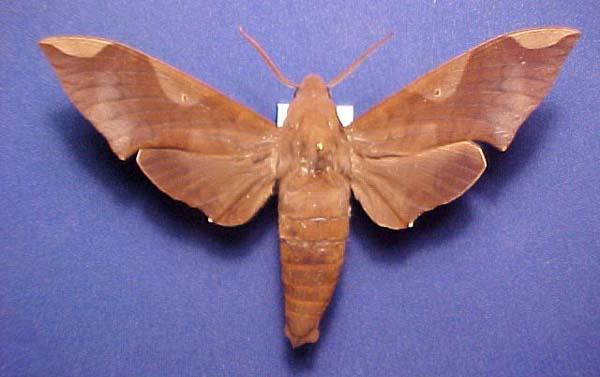
Pachylia syces courtesy of John Vriesi.
This site has been created by Bill Oehlke.
Comments, suggestions and/or additional information are welcomed by Bill.
TAXONOMY:
Family: Sphingidae, Latreille, 1802
Subfamily: Macroglossinae, Harris, 1839
Tribe: Dilophonotini, Burmeister, 1878
Genus: Pachylia Walker, 1856 ...........
Species: syces syces Hubner, 1819
|
DISTRIBUTION:
Pachylia syces syces (approx. wingspan: 106-122mm (F&AW))
flies in all biomes from
Mexico:
Belize: Corozol, Cayo;
Honduras, etc. to
Colombia: Cundinamarca (RTN);
Venezuela: (Barinas; Merida, Venezuela (JRAC));
Brazil: Sao Paulo (Andreia Fernandes); Rondonia (A&FW); predominantly Amazonian but is found in all Brazilian states (JH);
Bolivia: Beni, La Paz;
Paraguay: Asuncion; Central; and
Argentina: Entre Rios, Jujuy, Misiones, Salta (405m EB), Buenos Aires (JRR).
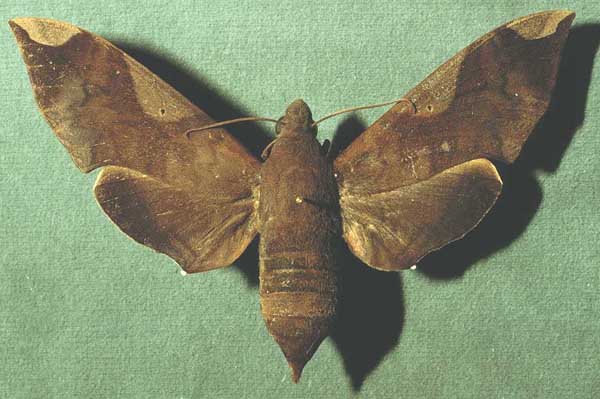
Pachylia syces syces, Costa Rica, courtesy of Dan Janzen.
The location for the type specimen is unknown. The species seems rarely attracted to lights.
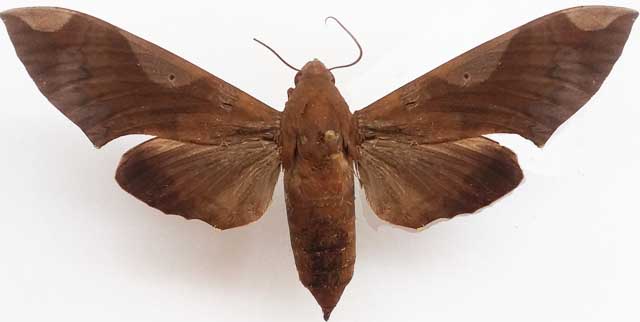
Pachylia syces, 122mm, Frenza Rancho Grande, Rondonia, Brasil,
Septemer, 1991, courtesy of Frank and Anna West.
FLIGHT TIMES:
There are probably several flights throughout the year. Rodrigo Torres Nunez reports a December 14, 2010 flight in Cundinamarca,
Colombia. Humberto Calero Mejia reports a July 5, 2011 flight in Cali, Valle del Cauca, Colombia. Andreia Fernandes reports an August flight in Sao Paulo, Brazil.
Anna and Frank West report a September flight in Rondonia, brazil.
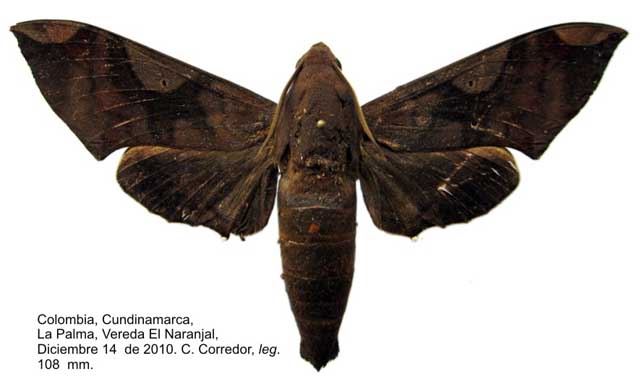
Pachylia syces syces, Cundinamarca, Colombia,
1084mm, December 14, 2010, courtesy of Rodrigo Torres Nunez,
id by Bill Oehlke.
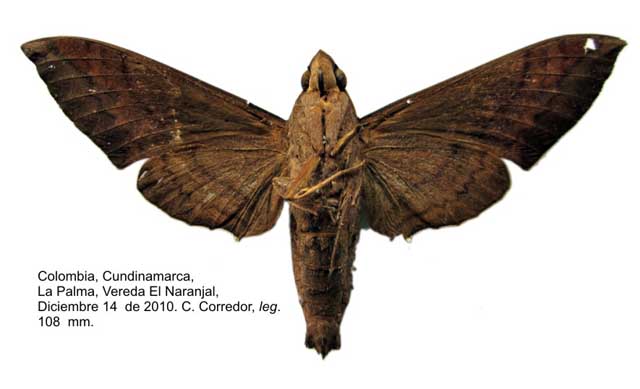
Pachylia syces syces (verso), Cundinamarca, Colombia,
108mm, December 14, 2010, courtesy of Rodrigo Torres Nunez,
id by Bill Oehlke.
ECLOSION:
Larvae pupate in thin walled cocoons under leaf litter.
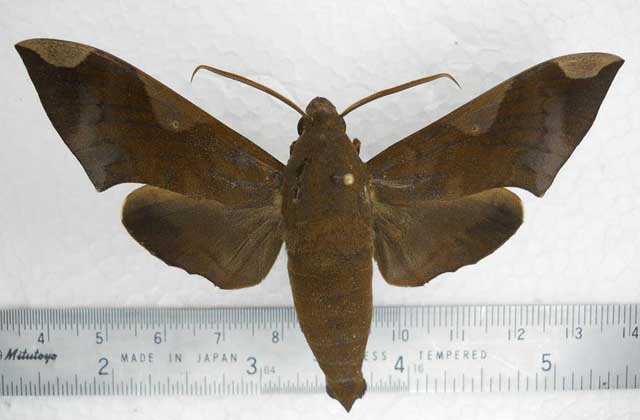
Pachylia syces, Cali, Valle del Cauca, Colombia,
106mm, July 5, 2011, 991m, courtesy of Humberto Calero Mejia.
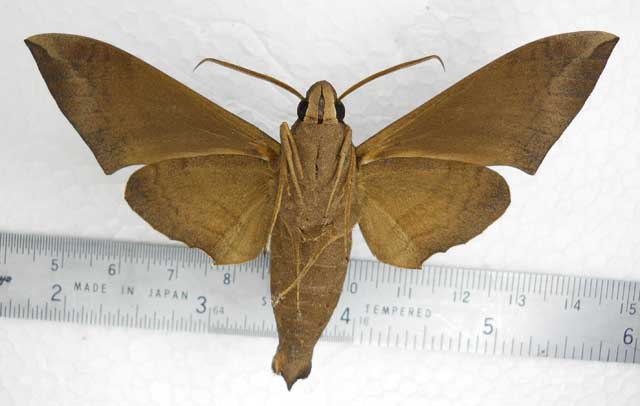
Pachylia syces (verso), Cali, Valle del Cauca, Colombia,
106mm, July 5, 2011, 991m, courtesy of Humberto Calero Mejia.
SCENTING AND MATING:
Females call in the males with a
pheromone released from a gland at the tip of the abdomen.
EGGS, LARVAE, PUPAE:
Larvae are reported to feed on Ficus microcarpa, Ficus prinoides, Ficus ovalis
and Artocarpus integrifolia in Brazil.
Jean Haxaire: "Moraceae. Moss (1920) has reared it on Artocarpus integrifolia and Cecropia sp. In Costa Rica, on species of Ficus spp."
In the early instars, larvae greatly resemble Pseudosphinx tetrio
or a coral snake. They thrash about when disturbed and also "squeak".
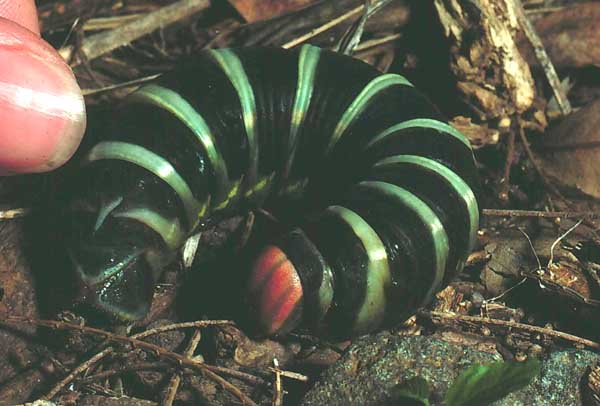
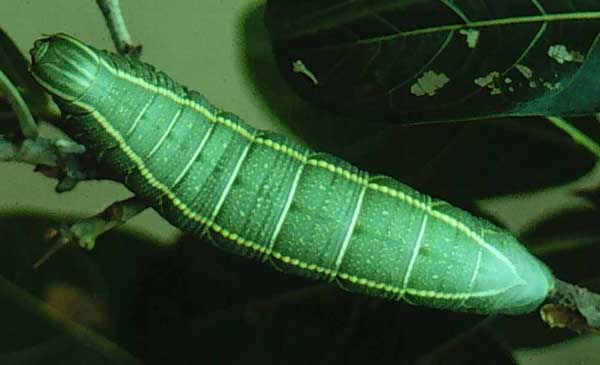
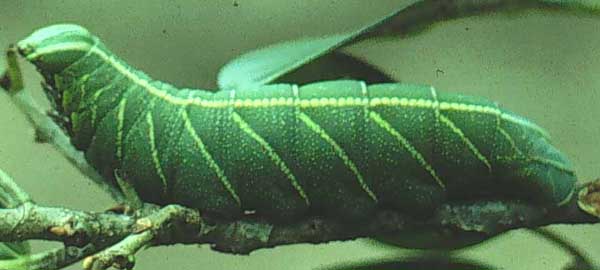
Return to U. S. A. Table
Return to Sphingidae Index
Return to Dilophonotini Tribe









